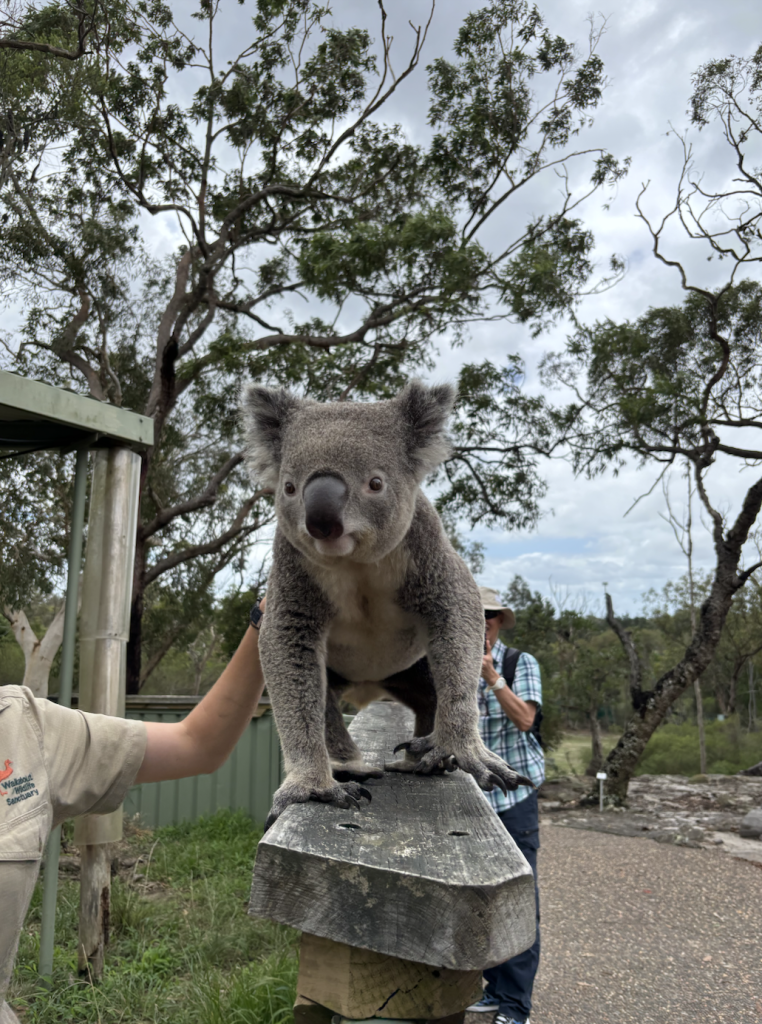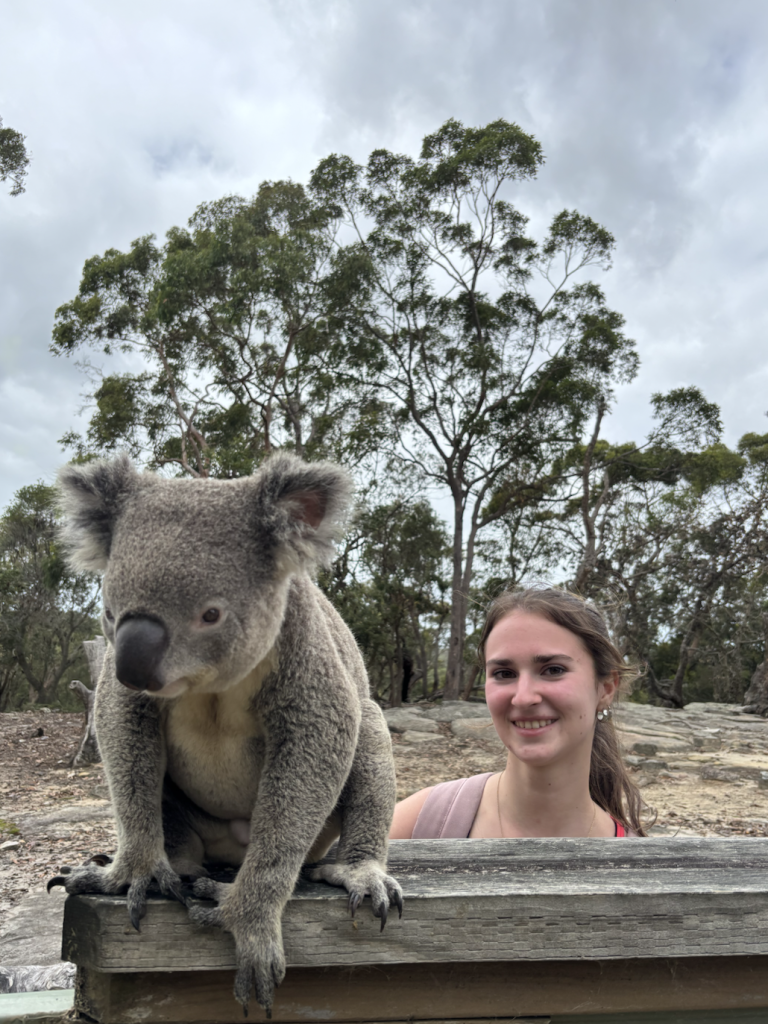This week, our academic adventure in Australia began as we started our classes, undertook a walking tour to become familiar with the city, and went on a day trip to the Walkabout Wildlife Sanctuary, where we have not only become accustomed to the local people in the area, but also the local animals. Australia is nothing if not a place where the kangas and roos of the world can spend their time hopping about, especially in the 60 acres of land that the walkabout wildlife sanctuary offers. The 380 animals are happy in their natural habitat, where a lot of them are free to roam with no barrier between animal and people, epitomizing the mutual trust they have and the respect in boundaries and body language despite a physical fence being absent. Much like the rabbits, squirrels, and deer in American wildlife, this Australian preserve comprised of wallabies, kangaroos, and ostriches traipsing about.


Despite the animals’ calm and tranquil lifestyle, the sanctuary has not always been a sure place for these animals to stay. Before traversing the area and meeting the many species, we were able to learn about the history of the sanctuary and how it has grown. After learning of the government’s plans to instate a sand quarry in the plot of land immediately next to the beloved sanctuary, the owner, Tessa, was not going to let the land be ruined by the ghastly industrious reapings this site would surely deposit on the sanctuary. She had to protect her sanctuary from the habitat and landscape degradation, air, noise, and water pollution that would surely drive her and her animals out. Court would prove to be a difficult battle because environmental protection is less and less favored in the wake of business, progress, and what makes the most money. By focusing their efforts in the Land and Environment Court of NSW on the specified issue of retaining aboriginal culture, the sanctuary was able to build up an argument that concentrated on the focal point of the issue and win the case. This is just one example of the continual grip of society closing in on the natural lands that many species habituate and need to survive, and although the trip to the sanctuary remained a positive reminder, the story of Tessa and the sanctuary’s battle to save their animals prompts my many thoughts and concerns of the cessation that continues to persist in places just like hers.
Though my attention was brought to the negative benefactors such as the government and the issue of the sand quarry, Tessa also taught us about the positive impact we can make as individuals. Back when the sanctuary had only about 250 animals at the time, fires in Australia much like the fire’s in California today were raging, and began to travel incessantly and close to the sanctuary. It was then that Tessa reached out for help, and received unimaginable support from the online community. Over a hundred thousand people shared her post asking for pet packs, crates, and supplies to help transport the animals to a safe place. Huge trucks showed up bringing a plethora of supplies and people were even offering things she didn’t ask for, such as food to give the staff during this chaotic time. This story relayed to me a presentiment of faith in the future in that when passionate people put their resources together, they can save what matters most to them and make a positive impact on the world.